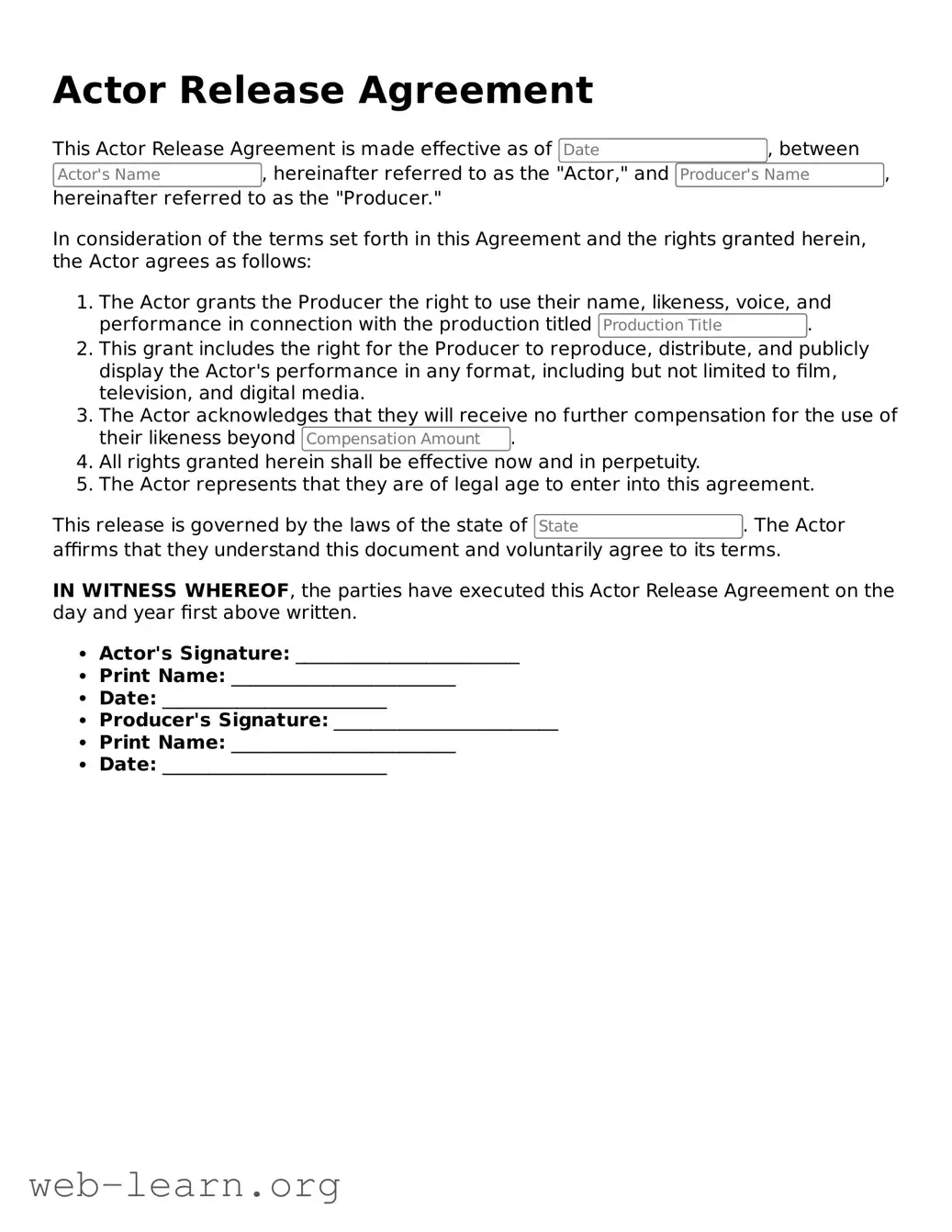When filling out the Actor Release form, many people make mistakes that can lead to misunderstandings later. One common mistake is leaving blank spaces where information should be provided. Each section of the form is important. Omitting details can make it difficult for producers or agents to reach them.
Another issue arises when individuals fail to sign the form. A signature is essential. Without it, the release is not legally binding. Even in the digital age, a missing signature can create serious problems down the line.
Many people also neglect to review the terms of the release. It’s crucial to understand what rights are being granted. Without this knowledge, someone might unintentionally agree to more than they intended. Reading the fine print can help avoid unpleasant surprises.
Incorrect contact information is another frequent error. Providing an outdated phone number or email address can hinder communication. This can cause delays in the production process and potential missed opportunities.
Some individuals misidentify themselves on the form. It is important to use the correct legal name. Nicknames or stage names should not replace the person's real name, as this can lead to confusion in legal matters.
People often forget to include the date when they fill out the Actor Release form. A proper date ensures that all parties have a clear timeline. Including this detail can prevent issues regarding when the agreement becomes effective.
Another mistake involves not detailing the projects covered by the release. Individuals should specify the nature of the work, whether it involves film, television, or other media. This clarity can prevent disputes concerning future projects.
Failing to read the entire release before signing is also common. Skimming through the document may lead to misunderstandings about commitments and permissions. Taking the time to read everything can save trouble later.
Misunderstanding the scope of the release is another potential pitfall. Actors might believe that their image can only be used in a specific project. In reality, it might include various media formats and uses. Clarity is vital.
Lastly, some people overlook discussing the release with legal counsel. While this may not be necessary for everyone, seeking legal advice can provide valuable insights. It’s always wise to ensure that one’s rights and interests are protected.
